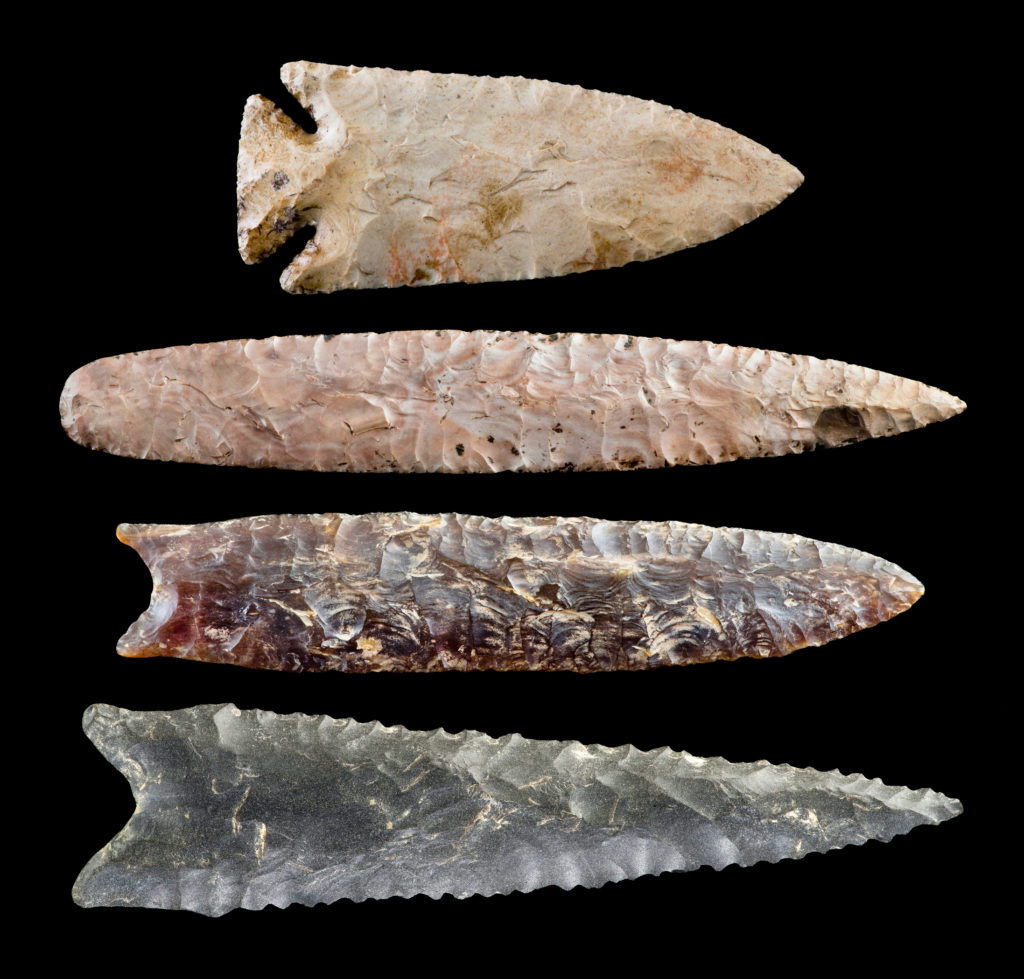
Check calendars across Florida and you’ll find a variety of unique festivals that range from celebrations of swamp cabbage in Labelle to the art of “worm grunting” in Sopchoppy. Not to be outdone, Ocala claims the Silver River Knap-In and Prehistoric Arts Festival. It takes place each February at the Silver River Museum, is one of the largest events of its kind in the Southeast and offers a chance to see flint knapping firsthand.
The word knap means to break and originates from Old German “knoppen” or Middle English “knappen.” The act of “knapping” refers to the controlled breakage of stone such as flint (or chert in Florida) to create sharp tools. Prior to the invention of metals, sharp cutting implements made from stone helped people survive. Chopping or carving wood, butchering animals for food or turning hides into leather all require sharp-edged tools. In the absence of metal, stone is the next best alternative.
Prehistoric cultures relied on stone tools. If people did not have access to suitable material, they would trade with neighbors to get it. Spears and arrows, drills, knives, scrapers, axes, adzes and other implements were tipped with sharp bits of stone. Flints and cherts resemble glass in the sense they are fine-grained and break with very sharp edges. Knappers strike the stone in a controlled manner to shape the rock into the desired tool shape.
Raw stone was quarried from sources of parent rock, reduced to manageable chunks and worked into finished tools. Stone was even cooked in fires to make it easier to shape. Working edges were re-sharpened as they became dull from use and tools were discarded when broken or worn out. Rock is practically indestructible and stone tools present archaeologists with clues about past cultures that are often all that remain of the people who created them.
Once we figured out how to make metals such as bronze and iron, flint knapping became less important but did not disappear. Early firearms used lock mechanisms that included a flint to create spark and fire the weapon. Armies and hunters across most continents relied on this technology and kept flint knappers in business. Flintlock muskets and rifles were used up until the late 1800s and traditional shooting enthusiasts still make and fire them today.
Flint knapping has seen a resurgence among archaeologists as a way to better understand the past and artists who create beautiful recreations of ancient implements. Each February, expert knappers from across the country arrive at the museum to demonstrate their craft, trade among themselves and sell their work. While there is no swamp cabbage or worm grunting at this event, it is a fascinating glimpse into the past.
The festival will take place 9am to 4pm February 19th and 20th. Admission is $8; free
age 5 and younger. For more information, visit
silverrivermuseum.com or call (352) 236-5401.
Scott Mitchell is a field archaeologist, scientific illustrator and director of the Silver River Museum & Environmental Education Center.






